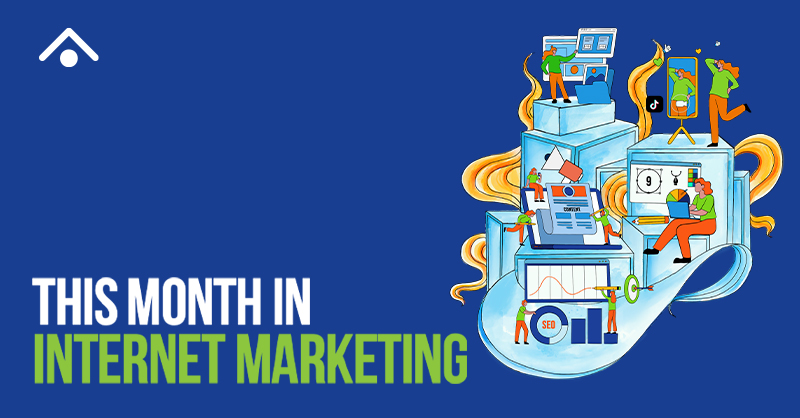Happy Tuesday!
This Week in Internet Marketing, we're covering a new feature launched by Facebook that allows you to view a Page's ads, remarketing campaign tips, and how to make your website foster trust with consumers. We also focus on plugins to use within WordPress to help with page speed and best practices for writing better emails. Let's dig in!
Want to See Your Competitors' Facebook Ads? Here's How to Do It

As a business, you should always keep an eye on what your competitors are doing, both strategically and tactically. There’s never been a way to monitor your competitor’s ads on Facebook, but now with Facebook’s latest feature, anyone can see the ads run by a page. This feature is a huge benefit to businesses as now they’ll be able to analyze the competition.
To use the feature, navigate to your competitor’s (or a business you follow) Facebook Page. Next, click on the new section 'Info and Ads'. In this section, you’ll be able to view all the ads that the brand currently is running. You can view the different ad types they are using and if they’re promoting any offerings. This can really provide you with useful insights such as what promos they are prioritizing (and ultimately business objectives) and what strategies they are implementing. You can then determine if you want to emulate a competitor’s efforts or instead, choose a strategy to differentiate your brand from theirs.
6 Things to Consider in PPC Remarketing Campaigns

Remarketing is one of the best and most effective ways to bring back visitors so if you’re considering rolling out a remarketing campaign, keep these tips in mind.
Don’t assume there is a sizeable retargetable audience. Use analytics to determine what your repeat visitors are and forecast based on these numbers. When building out your audience, don’t include a user who has already purchased from you and is unlikely to do so right away. Bear in mind consumption time before targeting a user and don’t overlook those customers that bought from you before, even if it was long ago. Factors like seasonality and renewals are examples of long-term remarketing tactics.
When setting up a remarketing campaign, give a user more reasons to consider your business. Sometimes a user in the discovery phase is not only researching a solution, but they are also confirming if the problem they are looking to solve is the right problem to be addressed. By upselling and cross-selling, you’re giving them more options to keep in mind.
As for messaging, consider what messaging a user is responding to, or has seen, and build on it. Lastly, implementing a remarketing campaign doesn’t necessarily mean a larger budget.
How to Optimize WordPress After Using a Page Speed Test

Running a page speed test is simple and easy to do. Three reasons you should be testing your site’s speed is site rankability, user experience, and conversion rate. You can check your site speed by using resources such as Pingdom and Google Lighthouse. After running a page speed test, you’ll undoubtedly want to make some improvements to your website based on the recommendations. If you’re a WordPress user, here are some ways to optimize your site and use plugins to execute the changes.
The first impact to speed is images. If your site is image-heavy, it’s definitely a good idea to optimize the images. Set image dimensions in WP, to scale any uploaded images to these pre-set sizes. Additionally, plugins like Kraken.io or Imagify can help optimize images. If you’ve received a recommendation about caching, plugins such as WP Super Cache or WP Fastest Cache will help.
If its a compression recommendation you’ve received, this means you need to make your files as small as possible before sending them to a browser. Files can vary from CSS to JavaScript. A plugin like WP Rocket can help with compression settings. Compression can also depend on your server settings, something your hosting company can assist with doing.
Factors That Influence Your Website’s Credibility

Your website represents your business. Customers will choose your brand only if they can trust it and they do this by visiting your site and making a decision about its credibility. Websites are credible by being useful and easy to access for a user. There are many factors at play when it comes to your site’s trust score so pay close attention to them to ensure you’re aiding the trust-building process.
Your search engine ranking plays a role in site credibility. It creates a great impression on a potential customer because, to rank high, your site is subject to a search engine’s algorithm, policies, and assessment. A social presence will also help build trust with a user, so place all links pointing to your business’ social profiles on your site. Something as simple as will an updated blog and current content will help too.
Reviews and testimonials are obvious factors when it comes to credibility. Customers will seek out reviews on a product or service before making a purchase. People love other people’s opinions so place them on your site. For more trust-building elements of a website, read the full article here!
5 Simple Ways to Write Better Emails

Email continues to be the primary way we communicate in business, so it’s essential that we put effort into making them better! Why? Because the result is higher engagement, as in more opens, clicks, and responses. Here are five simple ways you can create more effective emails.
Subject lines are as important to an email as a Headline is to a piece of content—they can make or break it, so it’s vital that you get it right. Studies show that a personalized subject results in higher open rates. There are free tools that you can access to test out a subject line and how well a word will do. Keep your emails short, ideally between 50 to 125 words. People scan emails, with an average read time of 11 seconds.
Next, keep your emails clear. Readability is critical here so consider writing your emails at a 3rd-grade level. Sounds crazy but this will improve response rate with sales emails! Much like a subject line, you’ll want to personalize your copy. Go beyond the greeting and closing, and customize your message to the receiver. Dig a little to find out who you are emailing and what they do. Lastly, close strong with a sign-off. According to Boomerang, emails with a variation of ‘thank you’ resulted in more replies in comparison to “Best Regards” or “Sincerely”.





